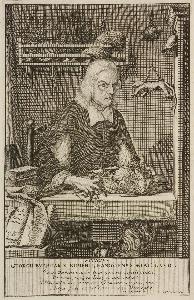Georg Eberhard Rumphius
Georg Eberhard Rumpf;Georg Eberhard Rumphius
Place: Wölfersheim
Born: 1627
Death: 1702
Biography:
Georg Eberhard Rumphius, a German-born botanist and painter, was born in 1627 and passed away in 1702. He is best known for his work Herbarium Amboinense, which showcases the flora of the East Indies. Rumphius' life was marked by severe personal tragedies, including the death of his wife and daughter in an earthquake, going blind from glaucoma, and losing his library and manuscripts in a major fire.
Early Life and Career
Rumphius joined the Dutch East India Company in 1652 and sailed to the island of Ambon in the Moluccas, where he started researching systematically the flora and fauna. He was also known as the 'Plinius Indicus' for his extensive knowledge of the natural world in the East Indies.
Notable Works
Some of Rumphius' notable works include:
- Herbarium Amboinense, a comprehensive guide to the flora of the East Indies
- Studies on the natural history of the East Indies, which are still widely referenced today
Rumphius' work has been published in several languages and is still widely studied and referenced in the field of botany and natural history. His contributions to the field of botany are immeasurable, and his work continues to inspire botanists and natural historians around the world.
Legacy
Rumphius' legacy can be seen in the many museums and institutions that house his work, including the St. Joriskerk museum in Amersfoort, Netherlands, which features a collection of artworks from various periods and styles. For more information on Rumphius' work and legacy, visit Georg Eberhard Rumphius on Wikioo.org. Rumphius' story is also featured in the Lubecker Museen in Germany, which showcases a collection of museums that highlight various artworks and historical pieces. To learn more about the Lubecker Museen, visit Discovering the Lubecker Museen in Germany on Wikioo.org. For a deeper understanding of Rumphius' work and contributions to the field of botany, visit The Museum Amsterdam Museum (Netherlands) - A Comprehensive Guide on Wikioo.org.

